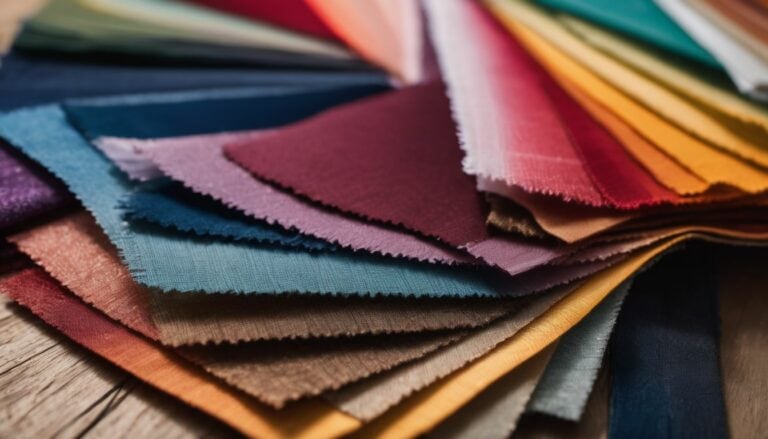Alternative For Dryer Sheets: Find The Best Experts Recommendations
Are you tired of using conventional dryer sheets and fabric softeners that are not only harmful to the environment but also leave behind a trail of synthetic fibers on your favorite clothes? It’s time to discover sustainable alternatives that will revolutionize your laundry routine and benefit both your fabrics and the planet.
Say goodbye to those chemical-laden laundry products and hello to natural fabrics that will leave your towels feeling softer than ever. We’ll delve into the world of soap nuts, essential oils, and other environmentally friendly alternatives that not only enhance the freshness of your laundry but also promote air flow for quicker drying times.
By making this simple switch, you can enjoy a fresh scent without compromising on sustainability. So, if you’re ready to embrace a greener approach to laundry day, join us as we uncover these game-changing alternatives for conventional dryer sheets.
Skipping the Drying Cycle: Is It an Option?
The Practicality of Air-Drying Your Clothes
Air-drying your clothes can be a viable alternative to using dryer sheets, offering both practical and eco-friendly benefits. By skipping the drying cycle and allowing your wet clothes to dry naturally, you not only reduce energy consumption but also extend the lifespan of your garments.
One advantage of air-drying is that it eliminates the need for dryer sheets altogether. These sheets often contain chemicals that can irritate sensitive skin or cause allergic reactions. By opting for air-drying, you avoid exposing yourself and your loved ones to potential skin irritants.
Furthermore, air-drying can help preserve the quality of your clothing. Tumble drying subjects fabrics to high temperatures and vigorous movement, which may lead to shrinkage, fading colors, or even damage delicate materials. By simply hanging up your wet clothes instead, you minimize these risks and ensure that they retain their original shape and color.
Weighing the Drawbacks
While air-drying offers numerous advantages, there are some drawbacks worth considering as well. One common concern is that it takes longer for clothes to dry naturally compared to using a dryer. This might pose an inconvenience if you’re in a rush or have limited space for hanging garments indoors.
To address this issue, consider planning ahead by adjusting your laundry routine accordingly. Start washing earlier during the day so that ample time is available for air-drying before evening comes around. Alternatively, if space permits, invest in a foldable drying rack or install retractable clotheslines indoors.
Another potential drawback is that air-dried clothes may feel stiffer compared to those dried in a machine. However, this can be easily remedied by adding vinegar or fabric softener during the rinse cycle when washing your clothes. These additives help soften fabrics naturally without resorting to dryer sheets.
Embracing Eco-Friendliness
By choosing to skip the drying cycle, you contribute to a more sustainable lifestyle. Tumble drying is one of the most energy-intensive activities in a household, consuming significant amounts of electricity. By air-drying your clothes instead, you reduce your carbon footprint and save on utility bills.
Air-drying eliminates the need for disposable dryer sheets, further reducing waste and environmental impact. These single-use sheets end up in landfills and contribute to pollution. By opting for an alternative that doesn’t generate additional waste, you actively participate in preserving our planet.
Aluminum Foil vs. Dryer Sheets
Effectiveness of Aluminum Foil as an Alternative to Dryer Sheets
Aluminum foil is a surprising contender that has gained popularity among laundry enthusiasts. Many people have discovered that using aluminum foil in the dryer can yield similar results to traditional dryer sheets. By crumpling up a sheet of aluminum foil into a ball and tossing it into the dryer with your clothes, you can achieve several benefits.
One advantage of using aluminum foil is its ability to reduce static cling in your laundry. The crumpled foil creates friction as it tumbles with the clothes, which helps to neutralize static electricity build-up. This means fewer instances of clothes sticking together or clinging onto your body when you remove them from the dryer.
Unlike traditional dryer sheets that need to be discarded after each use, aluminum foil balls are reusable. You can simply keep reusing the same ball of foil for multiple loads, making it a cost-effective alternative in the long run.
Pros and Cons of Using Aluminum Foil Instead of Traditional Dryer Sheets
While there are benefits to using aluminum foil as an alternative for dryer sheets, it’s important to consider both the pros and cons before making the switch.
Pros:
- Cost-effective: As mentioned earlier, aluminum foil balls can be reused multiple times, saving you money in the long term.
- Reduces static cling: The friction created by the crumpled foil helps eliminate static electricity in your laundry.
- Eco-friendly option: By opting for reusable aluminum foil balls instead of disposable dryer sheets, you contribute less waste to landfills.
Cons:
- Scent-free: Unlike scented dryer sheets that leave your laundry smelling fresh and fragrant, aluminum foil doesn’t impart any scent.
- Limited softening effect: While traditional dryer sheets often provide fabric softening benefits, aluminum foil primarily focuses on reducing static cling and may not provide the same level of softness.
Debunking the Myth: Are Dryer Sheets Bad?
Dryer sheets have long been a staple in laundry routines, but concerns about their potential health and environmental risks have raised questions about their safety. Let’s dive in!
Fact or Fiction: The Concerns
There are several claims against dryer sheets that have gained attention over the years. However, it is crucial to examine these claims critically and understand if they hold true.
- Health Risks: One common concern is that dryer sheets release harmful chemicals into the air, posing a risk to human health. While it is true that some dryer sheets contain chemicals like benzyl acetate or limonene, which can be irritants for sensitive individuals, the levels emitted during typical usage are generally considered safe by regulatory agencies like the Environmental Protection Agency (EPA).
- Environmental Impact: Another claim suggests that dryer sheets contribute to pollution and harm the environment due to their non-biodegradable nature. While it is accurate that most traditional dryer sheets are made from synthetic materials that do not readily break down, there are alternatives available today that address this issue.
Scientific Evidence: What Does It Say?
To truly understand the impact of dryer sheets, let’s turn to scientific research and studies conducted on this subject.
- Air Quality: Studies examining air quality in homes where dryer sheets were used found minimal impact on indoor air quality. While some volatile organic compounds (VOCs) may be released during use, they typically dissipate quickly and do not pose significant risks unless someone has specific sensitivities.
- Environmental Concerns: Traditional dryer sheets may indeed contribute to waste accumulation since they are often discarded after each use. However, eco-friendly alternatives have emerged in recent years that offer reusable options or biodegradable materials without compromising performance.
Addressing the Claims
Now that we have examined the scientific evidence, let’s address some common claims against dryer sheets and why they may not hold true in all cases.
- Skin Irritation: While some individuals may experience skin irritation or allergic reactions to certain chemicals present in dryer sheets, it is essential to remember that everyone’s sensitivity levels differ. For those with sensitive skin, choosing fragrance-free or hypoallergenic dryer sheet options can help minimize potential irritations.
- Environmental Impact: Concerns about environmental impact are valid. However, by opting for eco-friendly alternatives such as wool dryer balls or compostable dryer sheets made from plant-based materials, consumers can significantly reduce their ecological footprint.
Impact of Dryer Sheets on Your Dryer
Using traditional dryer sheets in your machine may seem like a convenient way to soften your clothes and reduce static, but have you ever considered the impact they can have on your dryer? We will highlight why maintaining a clean and efficient dryer is crucial for optimal functionality.
Potential Issues with Traditional Dryer Sheets
There are a few concerns you should be aware of. One of the main issues is the accumulation of residue left behind by these sheets after each cycle. This residue can build up over time, clogging the lint filter and obstructing proper airflow within the dryer. As a result, your machine may struggle to dry clothes effectively, leading to longer drying times and increased energy consumption.
Moreover, these residues can also accumulate on other components of your dryer such as the moisture sensor or heating element. Over time, this buildup can cause malfunctions or even damage certain parts of your appliance. Not only does this impact its efficiency, but it could also lead to costly repairs or premature breakdowns.
Effect on Performance and Lifespan
The presence of residue from dryer sheets inside your machine can significantly impact its performance. As mentioned earlier, clogged lint filters restrict airflow, making it harder for hot air to circulate evenly throughout the drum. Consequently, clothes may not dry uniformly and could come out damp or wrinkled despite running a full cycle.
When residue accumulates on moisture sensors or heating elements, they become less sensitive or less effective at regulating temperature accurately. This can result in overheating or underheating issues during drying cycles. Clothes subjected to excessive heat may shrink or suffer fabric damage while those exposed to insufficient heat might remain damp or require additional cycles to dry completely.
Furthermore, the accumulation of dryer sheet residue can also contribute to unpleasant odors inside your machine. As heat is applied, the chemicals present in these sheets can release a pungent smell that lingers on your clothes and within the drum itself. This not only affects the freshness of your laundry but may also transfer onto subsequent loads.
Importance of Maintaining a Clean and Efficient Dryer
Maintaining a clean and efficient dryer is essential for optimal functionality and longevity. Regularly cleaning the lint filter after each use helps prevent blockages and ensures proper airflow. In addition to this, periodically inspecting and cleaning other components such as moisture sensors, heating elements, and exhaust vents can help remove any accumulated residue or debris.
By keeping your dryer free from buildup, you can improve its overall performance while reducing energy consumption. Clothes will dry more quickly and evenly, saving you time and money in the long run. A well-maintained dryer is less likely to experience malfunctions or breakdowns, extending its lifespan.
Homemade Dryer Sheets: DIY Solution
Creating homemade dryer sheets is a fantastic alternative to store-bought options. Not only can you save money, but you also have the freedom to customize your sheets with natural ingredients that are safe for your clothes and the environment. Let’s explore some simple recipes and methods for making chemical-free dryer sheets using common household items.
Natural Alternatives to Store-Bought Options
Your pantry holds an abundance of possibilities. Here are some natural options you can use:
- Vinegar: Mix equal parts water and vinegar in a spray bottle. Spritz a clean cloth or sponge with this solution and toss it into the dryer with your laundry.
- Essential Oils: Add a few drops of your favorite essential oil onto a small piece of fabric or an old washcloth. Place it in the dryer along with your clothes for a delightful scent.
- Baking Soda: Sprinkle baking soda onto a cloth or directly into the drum of your dryer before starting the cycle. It helps eliminate odors and leaves your clothes feeling fresh.
By using these alternatives, you can avoid exposing yourself and your loved ones to potentially harmful chemicals found in commercial dryer sheets.
Personalized, Reusable, and Eco-Friendly
One of the many advantages of homemade dryer sheets is their reusability. Unlike disposable store-bought options, these DIY alternatives can be used multiple times before needing replacement. Not only does this reduce waste, but it also saves you money in the long run.
To make reusable homemade dryer sheets:
- Cut squares from an old cotton t-shirt or any soft fabric.
- Soak them in a mixture of liquid fabric softener diluted with water.
- Wring out excess liquid and let them air dry.
- Once dry, add a few drops of essential oil if desired.
-
Toss one sheet into each dryer load, and it’s ready to go!
Not only will your clothes come out soft and static-free, but you’ll also have the satisfaction of knowing that you’ve made an eco-friendly choice.
Maintaining Your Dryer
While homemade dryer sheets are a wonderful alternative, it’s essential to remember regular maintenance for your dryer. Neglecting proper care can lead to reduced efficiency and potential fire hazards. Here are some tips:
- Clean the lint trap after each use.
- Periodically check and clean the dryer vents to prevent clogs.
- Ensure your laundry routine includes cleaning the washing machine as well.
- Consider using dryer balls made of wool or rubber instead of traditional dryer sheets.
By following these simple steps, you can prolong the lifespan of your appliance while ensuring optimal performance.
Wool Dryer Balls as Natural Alternative
Wool dryer balls are becoming increasingly popular as a natural alternative to conventional fabric softeners and dryer sheets. Not only do they reduce static cling and soften fabrics, but they also offer several other benefits that make them an excellent choice for environmentally-conscious individuals seeking cost-effective solutions.
How Do Wool Dryer Balls Work?
Unlike traditional dryer sheets that contain synthetic chemicals, wool dryer balls are made from 100% natural wool. These balls work by bouncing around in the dryer, creating space between clothes and allowing hot air to circulate more efficiently. As a result, drying time is reduced, saving both energy and money.
The wool fibers of these balls help absorb moisture from the clothes during the drying process. This absorption action helps prevent static cling by reducing friction between garments. The gentle agitation of the balls against the fabric softens it naturally without relying on chemical-laden products.
Benefits of Using Wool Dryer Balls
- Eco-Friendliness: One of the significant advantages of wool dryer balls is their eco-friendly nature. They are a sustainable option compared to single-use dryer sheets that end up in landfills after each cycle. By choosing reusable wool balls, you contribute to reducing waste and minimizing your environmental footprint.
- Cost-Effectiveness: While initial investment may be slightly higher than purchasing traditional fabric softeners or dryer sheets, wool dryer balls prove to be cost-effective in the long run due to their reusability. A set of high-quality wool balls can last for hundreds of loads before needing replacement.
- Chemical-Free: Traditional fabric softeners often contain artificial fragrances and harmful chemicals that can irritate sensitive skin or cause allergic reactions in some individuals. Using wool dryer balls eliminates exposure to these potentially harmful substances while still achieving soft and fresh-smelling laundry.
- Versatility: Aside from reducing drying time and preventing static cling, wool dryer balls offer versatility in the laundry room. You can add a few drops of essential oils to the balls before each cycle to infuse your clothes with a pleasant scent. This natural alternative allows you to customize the fragrance without using synthetic perfumes.
- Gentle on Fabrics: Wool dryer balls are gentle on all types of fabrics, including delicate items and baby clothes. They help prevent wear and tear by reducing friction between garments during drying, extending the lifespan of your favorite clothing pieces.
Finding the Right Alternative for You
Now that you’ve explored various options to replace traditional dryer sheets, it’s time to find the alternative that suits your needs best. Consider your priorities and preferences when making a decision. Are you looking for a cost-effective solution? Do you prioritize environmental sustainability? Or perhaps you’re seeking an option that reduces static cling? Whatever your requirements may be, there is an alternative out there for you.
Take a moment to reflect on what matters most to you in your laundry routine. Experiment with different alternatives and see which one fits seamlessly into your lifestyle. Remember, finding the right alternative may require some trial and error, so don’t be discouraged if the first option doesn’t meet all your expectations. Keep exploring until you discover the perfect fit for fresh, soft laundry without using traditional dryer sheets.
FAQs
Are wool dryer balls safe for sensitive skin?
Yes, wool dryer balls are generally safe for sensitive skin. They are hypoallergenic and free from harsh chemicals or fragrances that can irritate delicate skin. However, it’s always a good idea to test them on a small area of fabric before using them with your entire load of laundry.
Can I use aluminum foil as an alternative if I run out of dryer sheets?
In case you run out of dryer sheets, aluminum foil can serve as a temporary alternative. Simply crumple up a sheet of aluminum foil into a ball and toss it into the dryer with your clothes. It helps reduce static cling by discharging any electrical buildup during drying.
How long do homemade dryer sheets last?
The lifespan of homemade dryer sheets varies depending on the materials used and how frequently they are used. On average, they can last up to 10-15 loads before needing to be refreshed or replaced.
Do wool dryer balls eliminate static cling completely?
While wool dryer balls can significantly reduce static cling, they may not eliminate it entirely. If static cling is a persistent issue for you, consider adding a few drops of essential oils to the dryer balls or using other anti-static remedies like vinegar or aluminum foil.
Can I use alternative dryer sheets with all types of fabric?
Yes, most alternative dryer sheet options are safe to use with all types of fabric. However, always check the manufacturer’s instructions and test a small area of fabric before using any alternative product on delicate or special fabrics.







